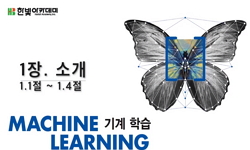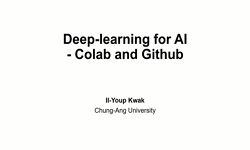The learning performance of artificial intelligence (AI) technologies such as machine learning and deep learning is approaching or surpassing that of humans, and humans are gaining new insights through hidden patterns and rules discovered by AI, but t...
http://chineseinput.net/에서 pinyin(병음)방식으로 중국어를 변환할 수 있습니다.
변환된 중국어를 복사하여 사용하시면 됩니다.
- 中文 을 입력하시려면 zhongwen을 입력하시고 space를누르시면됩니다.
- 北京 을 입력하시려면 beijing을 입력하시고 space를 누르시면 됩니다.

설명가능한 인공지능(XAI) 방법론의 산업별 적용가능성에 관한 연구 = A Study on the Applicability of eXplainable Artificial Intelligence(XAI) Methodology by Industrial District
한글로보기부가정보
다국어 초록 (Multilingual Abstract)
The learning performance of artificial intelligence (AI) technologies such as machine learning and deep learning is approaching or surpassing that of humans, and humans are gaining new insights through hidden patterns and rules discovered by AI, but their delivery and explanatory power is in short supply. As the use of AI technology expands by industry, values such as transparency, fairness, and accountability are continuously required in addition to accuracy. Accordingly, the demand and necessity for eXplainable Artificial Intelligence (XAI) has recently been emphasized. XAI is an analysis model, process, and service for determining the reliability of AI results by explaining what the reason is if there is an error in the output produced by the AI model. This study reviewed SHAP, LIME, and LRP, which are XAI methodologies, and explored the applicability of these methodologies to each industry. In the financial field, algorithms such as SHAP, LIME, and LRP can be applied to support credit rating prediction, loan decision-making, and investment decision-making, and to ensure their explainability and interpretability. This can increase fairness and reliability of AI results between financial consumers and financial institutions. In the defense and military fields, AI staff is being used as an auxiliary tool for key decision makers. If the explainability and interpretability of the results are guaranteed by applying XAI, the role of AI staff will change to active utilization. In the field of industrial accidents, SHAP can be used in a model that predicts industrial accidents to determine the degree of influence of variables that affect the occurrence of industrial accidents. As such, the XAI methodology can contribute to increasing the transparency and interpretability of models in various AI-based prediction models.
국문 초록 (Abstract)
기계학습(machine learning) 및 딥러닝(deep learning) 등 인공지능 기술의 학습 성능은 인간에 근접해 있거나 또는 앞서고 있으며, 인간은 인공지능이 찾아낸 숨겨진 패턴과 규칙을 통해 새로운 통찰...
기계학습(machine learning) 및 딥러닝(deep learning) 등 인공지능 기술의 학습 성능은 인간에 근접해 있거나 또는 앞서고 있으며, 인간은 인공지능이 찾아낸 숨겨진 패턴과 규칙을 통해 새로운 통찰력을 얻고 있으나 인공지능이 제시한 결과물에 대한 전달력과 설명력은 부족한 상황이다. 산업별로 인공지능 기술 활용이 확대됨에 따라 정확도 이외에도 투명성, 공평성, 책임성 등의 가치가 지속적으로 요구되고 있다. 이에 최근 설명가능한 인공지능(eXplainable Artificial Intelligence, XAI)에 대한 요구 및 필요성이 강조되고 있다. XAI는 인공지능 모델이 산출한 결과물에 오류가 발생하였다면 그 이유가 무엇인지 설명해주는 것으로 인공지능 결과에 대한 신뢰성 판단 기준을 위한 분석 모델이자 프로세스 및 서비스를 의미한다. 본 연구는 XAI 방법론인 SHAP, LIME, LRP에 대해 고찰하고, 이들 방법론의 산업별 적용 가능성에 대해 탐색하였다. 금융분야는 인공지능이 신용등급평가, 대출의사결정, 투자의사결정 등의 주요 의사결정을 지원하고, 이들의 설명가능성, 해석가능성을 보장하기 위해 SHAP, LIME, LRP 등의 알고리즘이 적용될 수 있다. 이것으로 금융소비자와 금융기관 간 인공지능 결과물에 대한 공정성과 신뢰성을 높일 수 있다. 국방 및 군사분야는 인공지능 참모(AI Staff)가 군 주요 의사결정자의 보조수단으로 활용되고 있다. XAI를 적용하여 결과물의 설명가능성 및 해석가능성이 보장된다면 인공지능 참모의 역할은 적극적인 활용 형태로 바뀔 것이다. 산업재해 분야에서는 산업재해를 예측하는 모형에서 SHAP를 활용하여 산업재해 발생에 영향을 미치는 변수의 영향도를 파악할 수 있다. 이처럼 XAI 방법론은 다양한 분야에서 의사결정을 지원하는 인공지능 기반 예측모형의 설명가능성 및 해석가능성을 높이는데 기여할 수 있다.
동일학술지(권/호) 다른 논문
-
내부회계관리제도에 관한 고찰: 내부회계인력 관련 연구의 중요성 및 한계점을 중심으로
- 글로벌경영학회
- 김경혜
- 2023
- KCI등재
-
- 글로벌경영학회
- 유해정
- 2023
- KCI등재
-
- 글로벌경영학회
- 나재석
- 2023
- KCI등재
-
코칭리더십이 조직 구성원의 심리적 안전감과 혁신행동에 미치는 영향에 관한 연구
- 글로벌경영학회
- 민정아
- 2023
- KCI등재




 스콜라
스콜라






